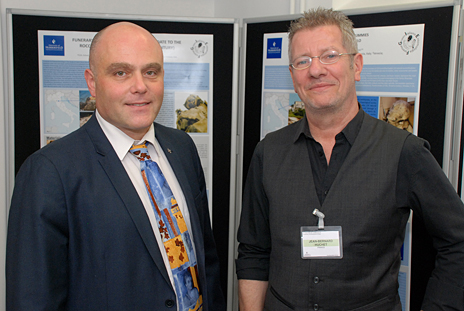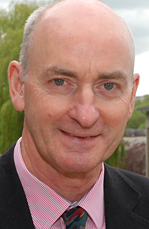Insect evidence solving riddles from the past and present

Fri, 22 May 2015 11:53:00 BST
 The University hosts the European Association of Forensic Entomology and the inaugural International Conference in Funerary Archaeoentomology
The University hosts the European Association of Forensic Entomology and the inaugural International Conference in Funerary Archaeoentomology
THE world’s leading experts in the use of insect evidence to investigate and understand life and death in modern and ancient societies have convened at the University of Huddersfield to discuss the latest developments in their branch of forensic science.
One result of the gathering will be a new specialist association and cycle of conferences devoted to the field of “funerary archaeoentomology”, which studies the remains of insects that colonised corpses discovered by archaeologists. These range from Egyptian and South American mummies that could be more than 10,000 years-old, to the recently-discovered bodies of WWI soldiers.
 ► Pictured with the University's Dr Stefano Vanin (left) is funerary archaeoentomology guest speaker Jean-Bernard Huchet
► Pictured with the University's Dr Stefano Vanin (left) is funerary archaeoentomology guest speaker Jean-Bernard Huchet
The University hosted the 12th annual meeting of the European Association of Forensic Entomology (EAFE). Over three days, the 90 experts in attendance – who came from 17 countries around the world – heard and presented 60 papers and displayed a large number of posters detailing their research.
The wide range of topics included the use of thermal imaging to detect insect-infested human remains; an investigation into whether flies lay their eggs in wounds; the forensic evidence to be gained from mites in human clothing; and the interpretation of the evidence from flies that colonise drowned corpses.
The EAFE conference was preceded by the First International Conference in Funerary Archaeoentomology, which set out to evaluate the latest research in what is relatively new discipline and to decide on future developments. This welcomed some 30 specialists in the burgeoning field, and the opening address was an overview of the subject from French scientist Jean-Bernard Huchet, who is acknowledged as the man who first defined funerary archaeoentomology.
 EAFE keynote speaker Dr Martin Hall ◄
EAFE keynote speaker Dr Martin Hall ◄
Twin disciplines – forensic entomology and funerary archaeoentomology
The linked conferences were held at the University of Huddersfield because it is the academic home of Italian-born Dr Stefano Vanin, Reader in Forensic Biology and a leading authority on the analysis of insect remains as a way of solving riddles from the past.
Dr Vanin works as a forensic scientist, aiding police with contemporary murder cases, but he has also been involved in the investigation of mummified remains, including bodies found in a medieval Italian crypt. This means that he straddles the twin disciplines of forensic entomology and funerary archaeoentomology.
He is a member of EAFE board and president of its Scientific Committee and its Organising Committee. He also presided over the equivalent committees for the First International Conference in Funerary Archaeoentomology.
Dr Vanin described this event as “the moment where we start to define the state-of-the-art of the discipline and where we discuss the challenges as well as creating new collaborations of friendships”.
The result of the conference was very positive, said Dr Vanin. It is likely that a new specialist Funerary Archaeoentomology association will be formed and it will hold conferences every two years. As at Huddersfield, it will link up with the EAFE conference of that year.
Both of the consecutive conferences held at the University of Huddersfield were deemed to be highly successful, said Dr Vanin, who also contributed to many of the research papers presented at the events.







